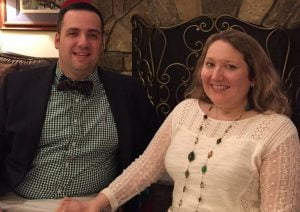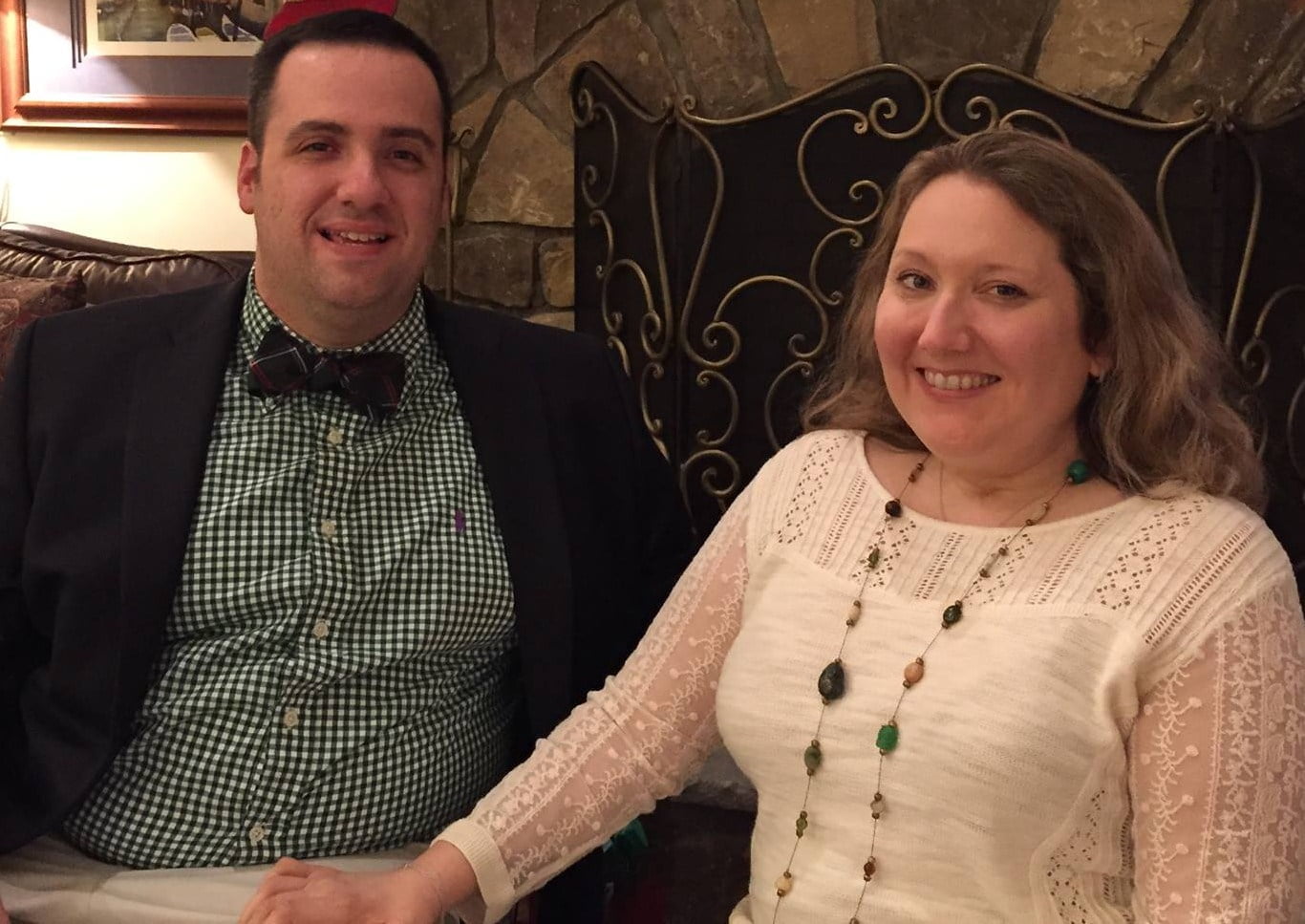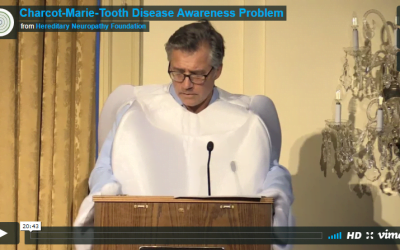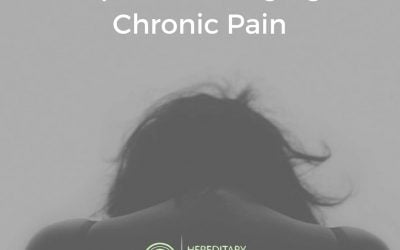 Growing up we called it “Steffi disorder.” My friends and family were as baffled as my expert neurologists. I had been diagnosed with typical Spiral Muscular Atrophy (SMA) as a toddler but never followed its progression; I never seemed to get weaker. My myriad of symptoms was distinctly different than anyone else’s I had ever met in a lifetime living in the neuromuscular community. I thought I might never find my true diagnosis, let alone others who share it with me.
Growing up we called it “Steffi disorder.” My friends and family were as baffled as my expert neurologists. I had been diagnosed with typical Spiral Muscular Atrophy (SMA) as a toddler but never followed its progression; I never seemed to get weaker. My myriad of symptoms was distinctly different than anyone else’s I had ever met in a lifetime living in the neuromuscular community. I thought I might never find my true diagnosis, let alone others who share it with me.
Through the years, the need to find an answer led me to my own online research searching for any disorders that seemed to fit my symptoms. I had severe lower leg weakness and foot deformities from birth, partial vocal cord paresis, scoliosis, hand weakness, and respiratory weakness with severe sleep apnea that developed in adulthood. Along with this weakness, however, I maintained very strong upper body and hip muscles which allowed me to walk with KAFO’s and lofstrand crutches into my mid-twenties. I had never been able to bear weight on my legs to stand, but when I received my KAFO’s and walker at 18 months, I took off walking and only grew stronger. Up until last spring, no diagnosis seemed to fit.
My life was forever changed when I came across a blurb about newly recognized atypical types of SMA not related to the SMA gene. After researching further, I discovered that a gene named TRPV4 was found to be related to three neuromuscular disorders in 2009, 1) Charcot-Marie- Tooth (CMT2C), 2) Scapuloperoneal Spinal Muscular Atrophy, and 3) Congenital Distal Spinal Muscular Atrophy. When I found the list of symptoms related to these disorders I was floored; they matched mine almost perfectly. I learned that these three disorders were now considered one disorder, TRPV4 Hereditary Motor and Sensory Neuropathy (TRPV4 HN), with a spectrum of severity.
Cautiously optimistic, I asked to be tested. Two weeks later I had the answer I had been seeking for 34 years. The results came back positive. I was overwhelmed with gratitude and excitement; I finally knew what was going on in my body and for the first time had a tangible avenue for both finding others who shared my diagnosis and advocating for treatment.
At the time of my diagnosis, my genetic counselor said there were only 25-30 documented cases in the world, with only one other individual who shares my exact mutation. Faced with such a rare and newly identified disorder, I realized that the challenges for us as a community were going to be finding each other, raising awareness of our existence, and advocating for research into treatments. I couldn’t help but find it my mission.
To begin these efforts, I turned to social media and posted in groups related to CMT and hereditary neuropathy searching for others who had tested positive for TRPV4HN. When I found a few others, it was thrilling to finally be in contact with people who understood many of my experiences related to our disorder. I was not alone. I started a private Facebook group for us to share experiences, research, and resources specific to our disorder. Our group has now grown to include eight of us who share our diagnosis. I anticipate that the group will grow as more and more people previously misdiagnosed or undiagnosed undergo genetic testing and test positive. As far as I know, our “gathering” of individuals with TRPV4 HN is the only one in the world.
Since TRPV4 HN is very debilitating and can be life-threatening because of respiratory involvement, the need for research into treatments is critical. It is a disorder of the calcium ion channels, and research is hopeful for treatment because the gene and its function are so well known, and preliminary research indicates that some of the muscle weakness may be reversible. The challenges now are identifying patients by advocating for genetic testing for previously undiagnosed or misdiagnosed patients, and raising awareness for the need for research to investigate potential treatments.
What a difference a year makes; from “Steffi disorder” to a definitive diagnosis with hope for potential treatments. When I look to the future, I am hopeful for answers to the remaining scientific questions. With partners like the Hereditary Neuropathy Foundation and Biopontis Alliance for Rare Diseases, I envision a world where, through treatments, individuals diagnosed with TRPV4 HN won’t have to live with its consequences.
Stephanie lives in North Carolina with her husband and two cats. She has a Master’s Degree from UNC-Chapel Hill, and works in the healthcare field.









Stephanie!
Thanks for this wonderful article. My daughter Lucille has a variant of this although we are still seeking approval from our insurance to sequence her TRPV4 gene.
My confusion is that these are listed as autosomal dominant conditions and neither I nor my husband suffer any symptoms.
Of course, people can have spontaneous mutations, which is what I will argue to the insurance company.
Did either of your parents have any manifestations?
Thanks for the infromation.
Nancy
Hello Nancy! Forgive me for just now seeing your comment. My parents do not have any symptoms, and there is no family history in my extended family- which had always been part of the mystery of my disorder. My geneticist thinks that my TRPV4 mutation is de novo, or spontaneous and isolated. Since I have my mutation, any children I have would have a 50% chance of inheriting the mutation in an autosomal dominant pattern. So TRPV4 HN would start with me. I hope this helps- please let me know if you have any other questions!
Thanks Stephanie, it turns out she does have the denovo TRPV mutation. She’s been classified as distal congenital spinal muscular atrophy but that gene, as I’m sure you know, has different phenotypes depending on penetrance. Hope all continues to be well with you. N
My Dr. said I have foot drop CMT. mostly because my mother and sister have CMT. no other diagnosis or any exercises I could do to possibly strengthen my ankle muscles. I did not have any noticeable symptoms until in my 60’s . Is there any thing I can do to help with my walking? I am mostly in the house and do not wear shoes inside. I am 80 yrs old and my balance due to loss of the tendon in my right big to e during surgery. and am totally deaf in my right ear so my balance is not good. Any info would help. Thank you. Lila
Hello Lila! I apologize that I am just now seeing your comment. I am wondering if Ankle-Foot-Orthoses (AFOs) would be helpful for you? They can help resolve your foot drop, and hopefully help with your balance. Another idea would be to try a walker, cane or walking sticks for balance. Sending you best wishes!
Thanks for the info!! Sounds kind of like me. Lost, with a whole bunch of problems NO ONE can diagnos. Thank you, thank you!!
Hello Leo- I’m so glad you found my article helpful. Sending you best wishes for a diagnosis!